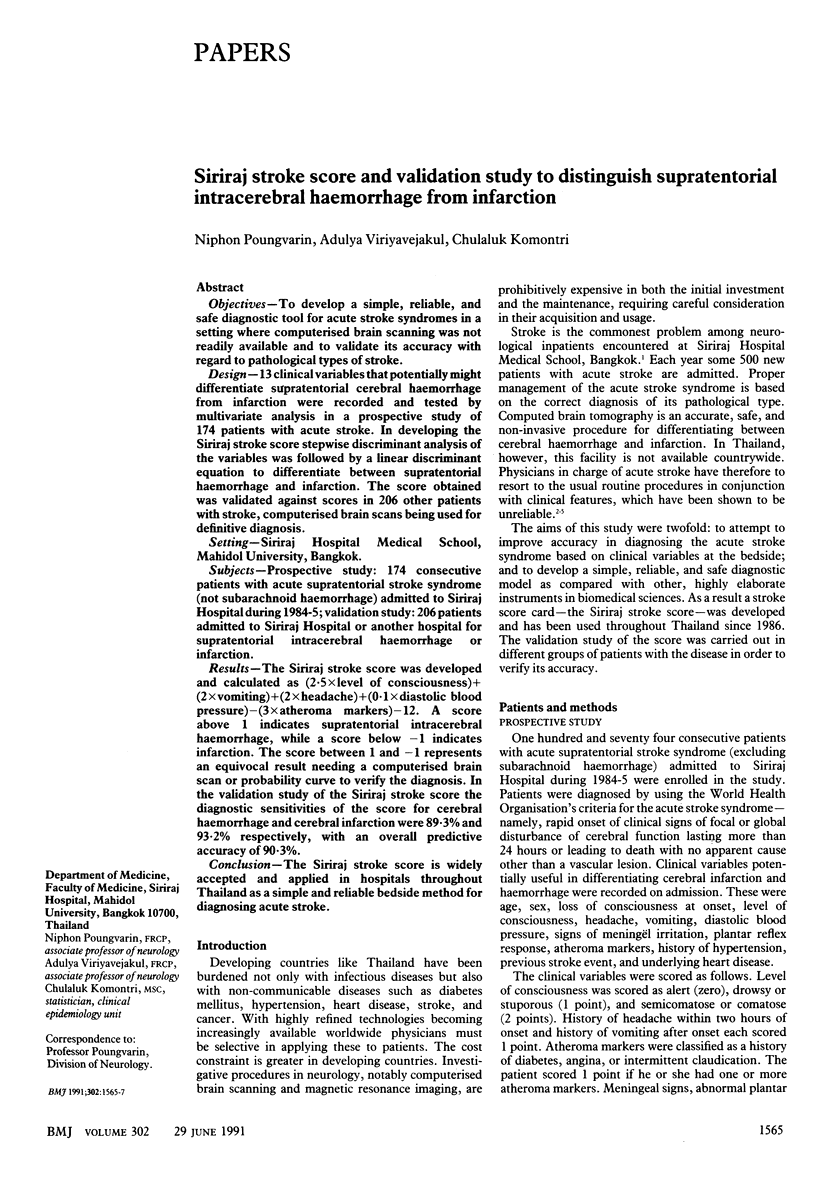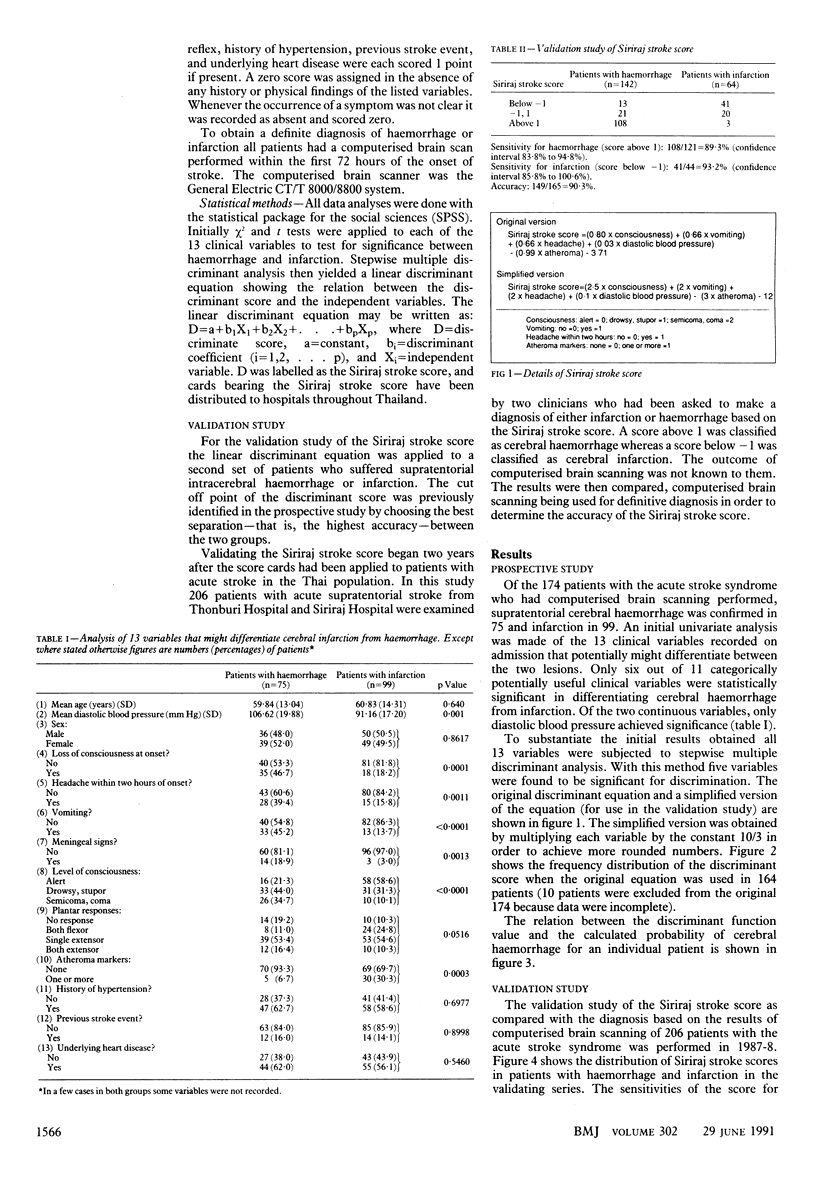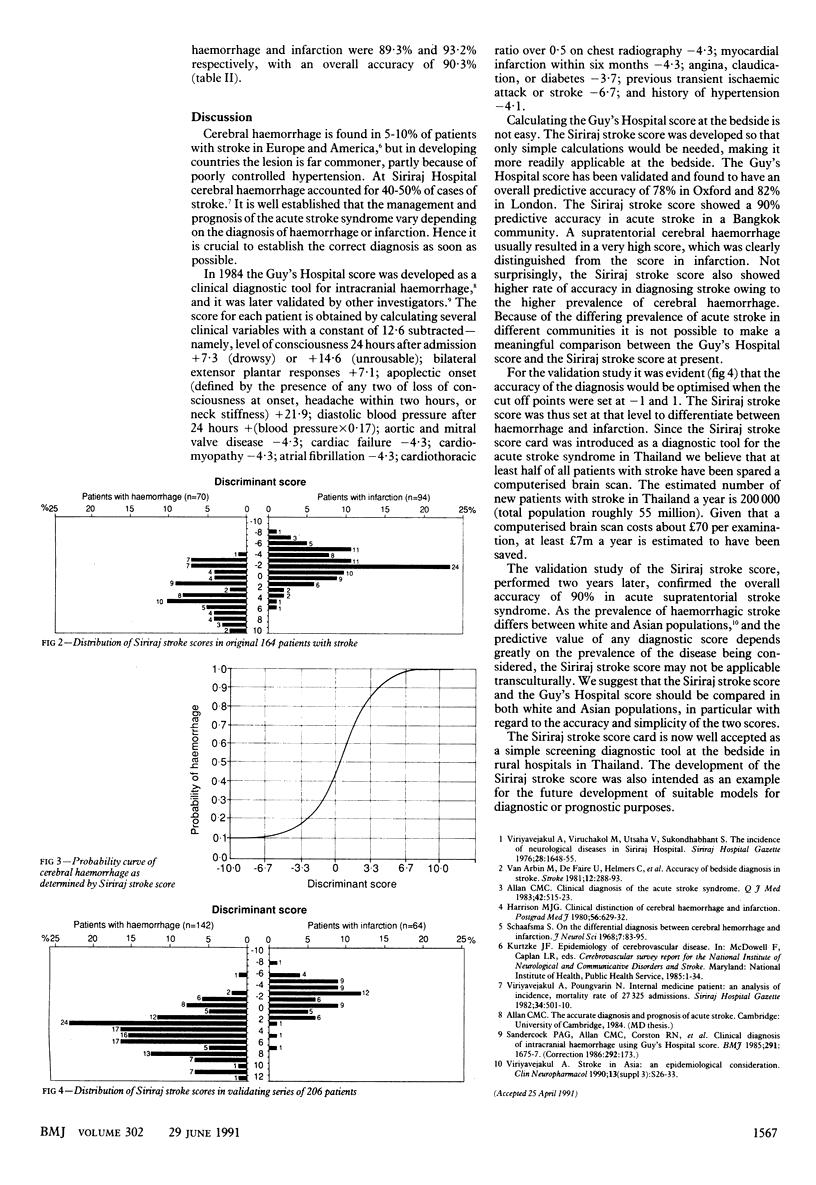Abstract
OBJECTIVES--To develop a simple, reliable, and safe diagnostic tool for acute stroke syndromes in a setting where computerised brain scanning was not readily available and to validate its accuracy with regard to pathological types of stroke. DESIGN--13 clinical variables that potentially might differentiate supratentorial cerebral haemorrhage from infarction were recorded and tested by multivariate analysis in a prospective study of 174 patients with acute stroke. In developing the Siriraj stroke score stepwise discriminant analysis of the variables was followed by a linear discriminant equation to differentiate between supratentorial haemorrhage and infarction. The score obtained was validated against scores in 206 other patients with stroke, computerised brain scans being used for definitive diagnosis. SETTING--Siriraj Hospital Medical School, Mahidol University, Bangkok. SUBJECTS--Prospective study: 174 consecutive patients with acute supratentorial stroke syndrome (not subarachnoid haemorrhage) admitted to Siriraj Hospital during 1984-5; validation study: 206 patients admitted to Siriraj Hospital or another hospital for supratentorial intracerebral haemorrhage or infarction. RESULTS--The Siriraj stroke score was developed and calculated as (2.5 x level of consciousness) + (2 x vomiting) + (2 x headache) + (0.1 x diastolic blood pressure) - (3 x atheroma markers) - 12. A score above 1 indicates supratentorial intracerebral haemorrhage, while a score below -1 indicates infarction. The score between 1 and -1 represents an equivocal result needing a computerised brain scan or probability curve to verify the diagnosis. In the validation study of the Siriraj stroke score the diagnostic sensitivities of the score for cerebral haemorrhage and cerebral infarction were 89.3% and 93.2% respectively, with an overall predictive accuracy of 90.3%. CONCLUSION--The Siriraj stroke score is widely accepted and applied in hospitals throughout Thailand as a simple and reliable bedside method for diagnosing acute stroke.
Full text
PDF


Selected References
These references are in PubMed. This may not be the complete list of references from this article.
- Harrison M. J. Clinical distinction of cerebral haemorrhage and cerebral infarction. Postgrad Med J. 1980 Sep;56(659):629–632. doi: 10.1136/pgmj.56.659.629. [DOI] [PMC free article] [PubMed] [Google Scholar]
- Sandercock P. A., Allen C. M., Corston R. N., Harrison M. J., Warlow C. P. Clinical diagnosis of intracranial haemorrhage using Guy's Hospital score. Br Med J (Clin Res Ed) 1985 Dec 14;291(6510):1675–1677. doi: 10.1136/bmj.291.6510.1675. [DOI] [PMC free article] [PubMed] [Google Scholar]
- Schaafsma S. On the differential diagnosis between cerebral haemorrhage and infarction. J Neurol Sci. 1968 Jul-Aug;7(1):83–95. doi: 10.1016/0022-510x(68)90005-1. [DOI] [PubMed] [Google Scholar]
- Viriyavejakul A. Stroke in Asia: an epidemiological consideration. Clin Neuropharmacol. 1990;13 (Suppl 3):S26–S33. doi: 10.1097/00002826-199013003-00003. [DOI] [PubMed] [Google Scholar]
- von Arbin M., Britton M., de Faire U., Helmers C., Miah K., Murray V. Accuracy of bedside diagnosis in stroke. Stroke. 1981 May-Jun;12(3):288–293. doi: 10.1161/01.str.12.3.288. [DOI] [PubMed] [Google Scholar]


